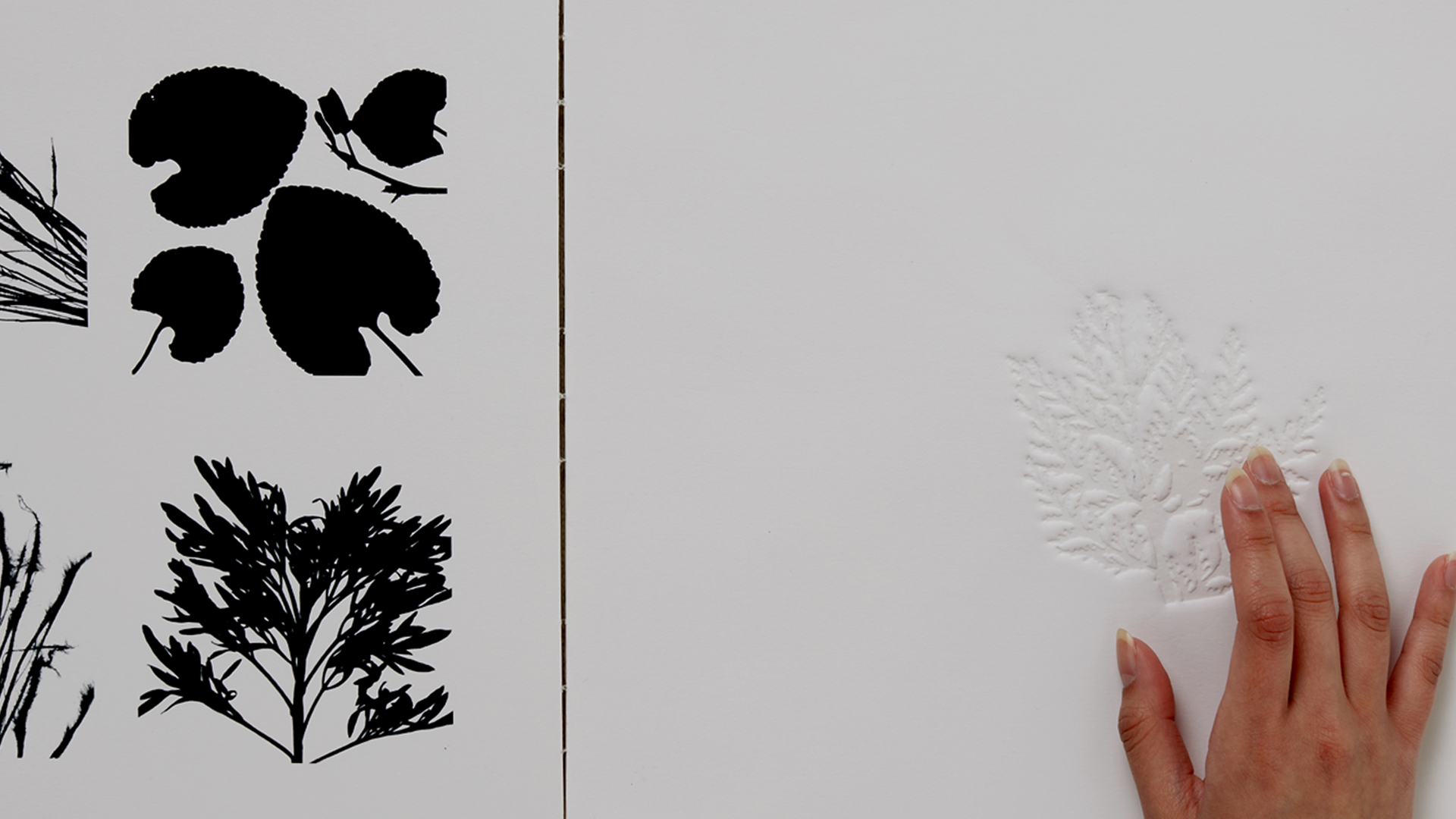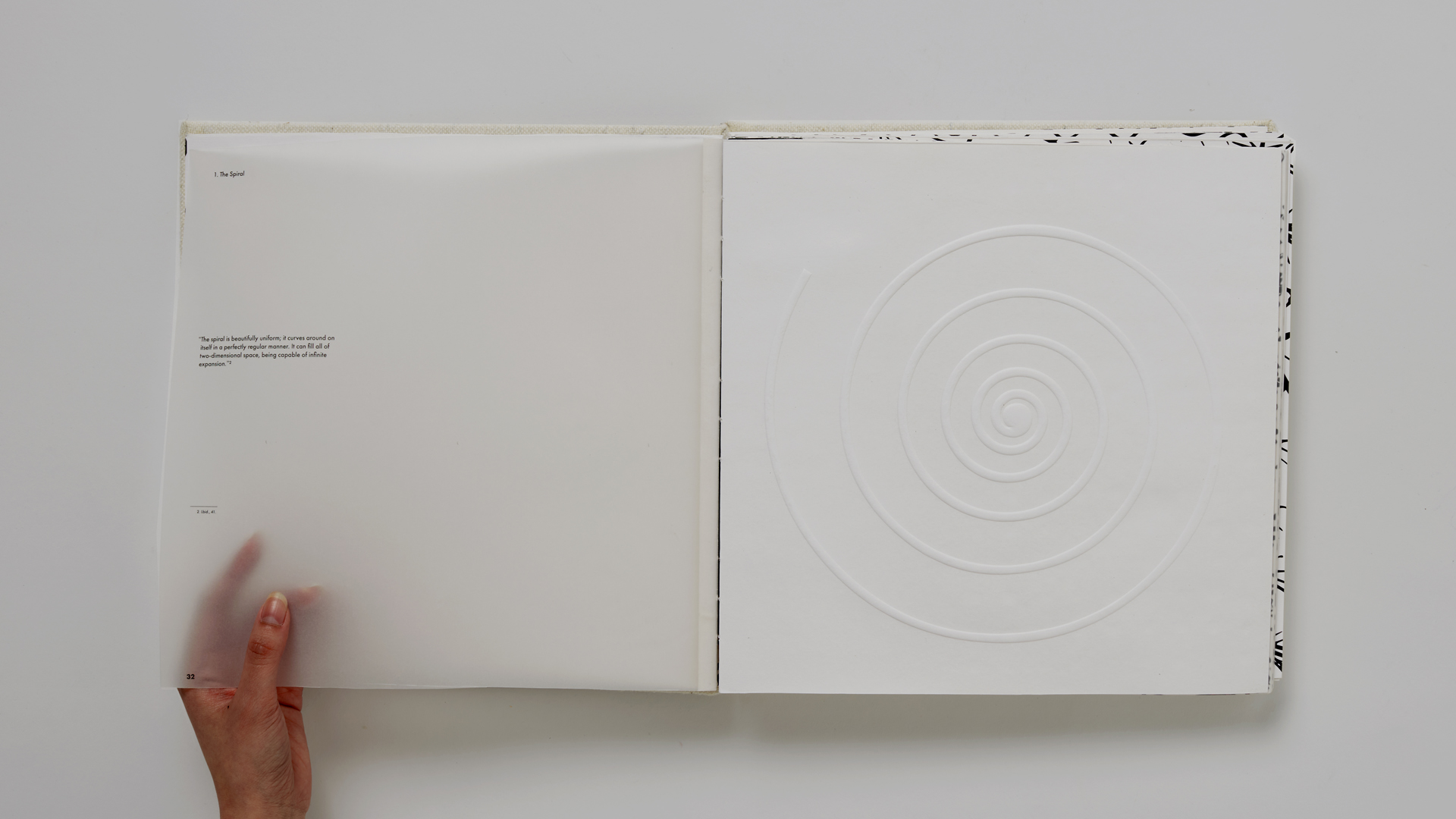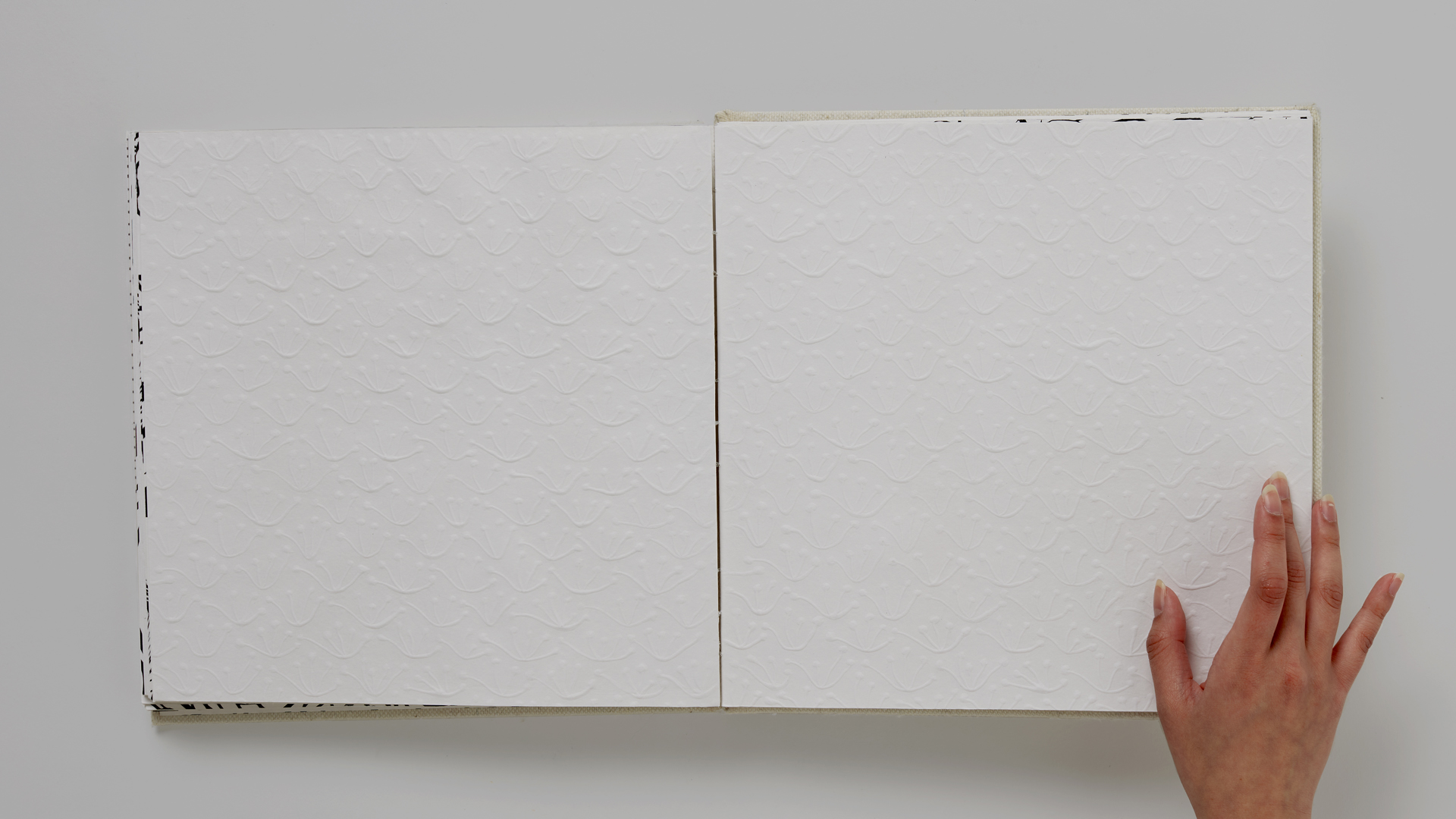
Dot, form, line, dot, form, line, dot, form, line. Under a microscope, everything is made up of these elements. So what can be original if everything is a repetition?
Dot, Form, Line is a tactile, printed publication exploring how the elements of dot, form, and line synergise to create the patterns and objects that surround us. Naturally occurring textures and arrangements are transcribed to create a visual and tactile library of nature’s impressions.
Artist and architect Peter Stevens describes nature's visual building blocks in his 1976 work Patterns in Nature. Dot, Form, Line uses these descriptions to identify these elements in a familiar space — the urban home. This publication aims to highlight the importance of connecting with our natural environment and sense of touch in our digital, visual, and increasingly home-bound world since Covid-19.
Dot, Form, Line explores the concept of pattern and repetition through consistencies of paper stock, type, colour, and the overall nature of the pages, in an attempt to examine topics of authenticity, originality, and ethics in the design industry.
In the visual world, patterns surround us. Core elements of dot, line, and form synthesise and create these ongoing designs. They can shift and blend into anything with just one small change to the arrangement of these fundamental elements. These patterns are apparent in nature too, and the intricacies of its design can be broken down and inspected.
Naturally occurring textures and arrangements are transcribed within the pages of the Dot, Form, Line publication, to create a visual and tactile library of nature’s impressions. As our life and society become more digitised and fast-paced, it becomes harder to connect with our natural environment. The increase in green space within our cities shows that many are aware of the benefits of having nature surround us. The disruptions of Covid-19 have only reinforced this notion. We have been at home, in one space, with sometimes even more work to do. The ‘new normal’ and its confinement has encouraged our digital society to reconnect with our natural environment. Nature has again become a relief, and a pause from life, from work, and from hypnotic digital tools.
Digital society has not only increased our time looking at static images but also changed the way we interact with physical objects. Tangible items and tasks such as note-taking, maps, and calendars have been digitally developed, and by doing this we have neglected our sense of touch (Kolesárova, 2018). The rise in popularity of paper books and vinyl records show that people crave the physical, and place more value on the tangible (Kolesárova, 2018).
The physical form of Dot, Form, Line — and the range of materials and physical processes used within it — aims to reconnect with the tangible. At the same time, this inquiry is regressing to a textured/old school approach to design and production. It introduces another way to read images and design, more than the traditional, digital 2D standard, through textural elements that encourage the reader to feel and interact with the pages. This notion is also highlighted by you yourself reading this — how ironic that you are interacting with my tactile publication through a two-dimensional image.
The repeating and consistent nature of the publication’s patterns and pages reflects the idea that all forms and objects are made up of the same building blocks, just in different formations. This concept also echoes an interest in appropriation in art and the challenge that every young designer faces to be original or bring something new to the industry.
Dot, Form, Line’s target audience are designers who are interested in patterns, graphic art, and the overlapping quality of nature in all aspects of our world. Formal elements of the design such as text, colour, paper stock were limited to create a purposeful aesthetic, and align with the repetitive concept. As testing and trialing was such an important part of the publication's physical production, I made a relief press at home using a car jack that allowed me to experiment with the new technique of embossing.
References:
Kolesárova, L. (2018, April 2). Designing For The Tactile Experience. Smashing Magazine.
Stevens, P. (1976). Patterns in Nature. Little Brown & Co.




